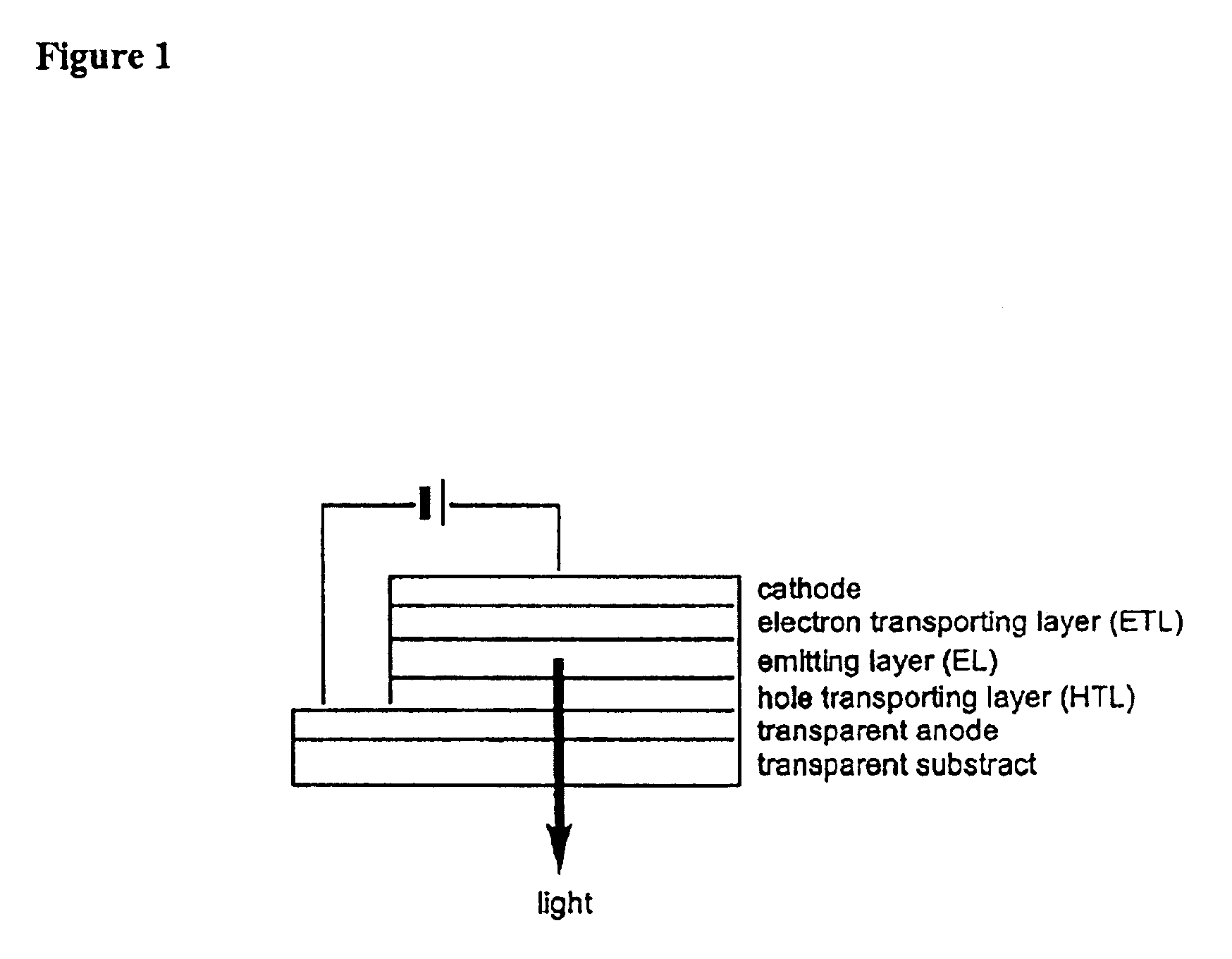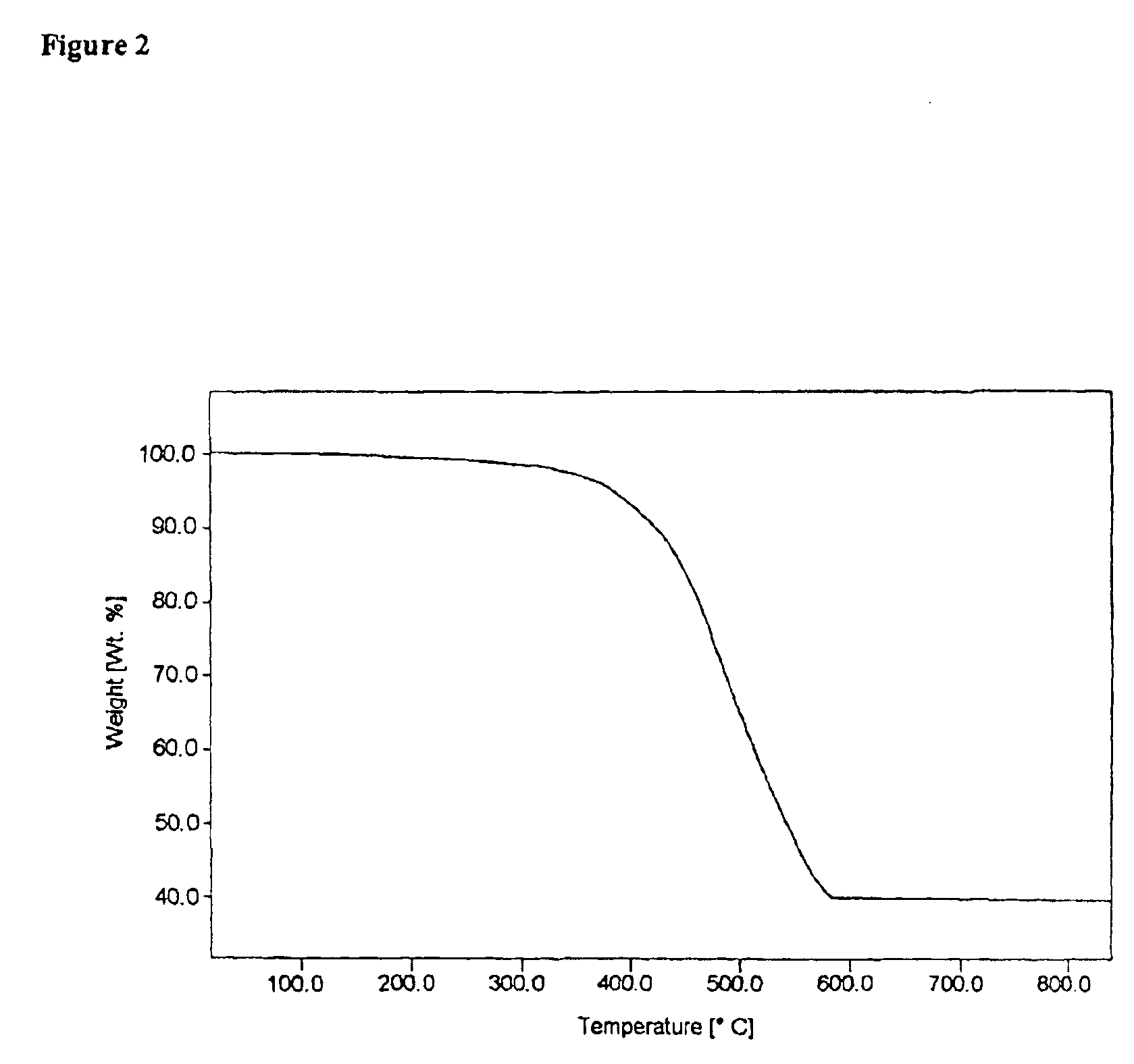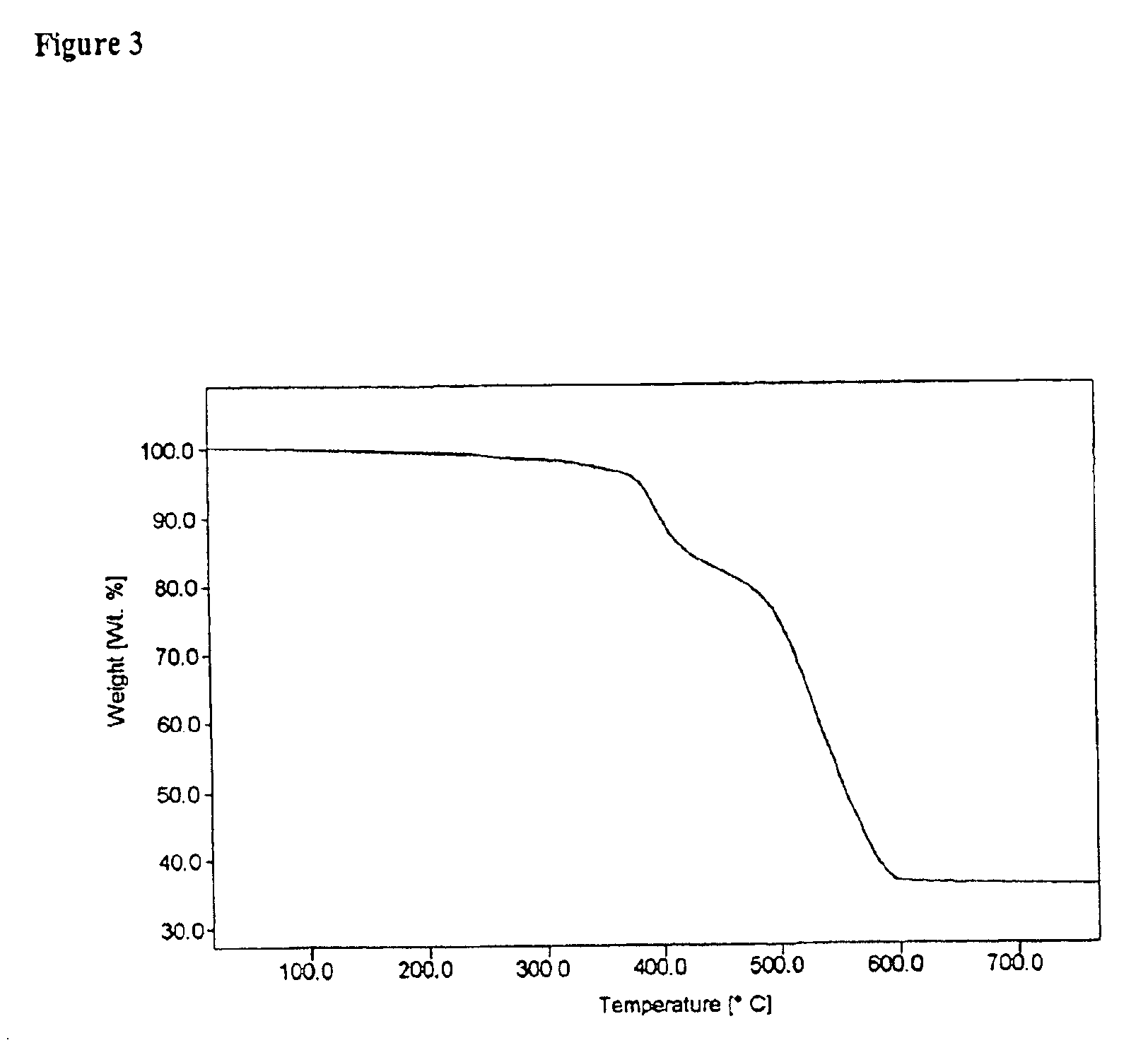Organometallic light-emitting material
- Summary
- Abstract
- Description
- Claims
- Application Information
AI Technical Summary
Benefits of technology
Problems solved by technology
Method used
Image
Examples
example 1
[0052]Complex 2 was used as the emitter. Typical electroluminescent spectrum, current-voltage (I-V) and luminance-voltage (B-V) curves and luminescent efficiency-current density curve of the device with a doping level of 2% are shown in FIG. 7. Turn-on voltage: ˜5 V; maximum luminance: 9600 Cd / m2 at 12 V; maximum efficiency: 4.2 Cd / A at 25 mA / cm2. In the electroluminescent spectrum, a peak at 430 nm besides the band at 560-630 nm is observed, indicating insufficient energy transfer between the host and the dopant.
example 2
[0053]The performance of the device using complex 2 as emitter with a doping level of 4% are shown in FIG. 8. Turn-on voltage: ˜5 V; maximum luminance: 7900 Cd / m2 at 10 V; maximum efficiency: 2.4 Cd / A at 30 mA / cm2. At this doping level, energy transfer between the host and the dopant is saturated, thus emission from the host is avoided.
example 3
[0054]Complex 3 was used as the emitter. The performance of the device with a doping level of 4% are shown in FIG. 9. A bathochromic electroluminescence is observed (λmax 580 nm), which is coinciding with the trend of the photoluminescence shown by these complexes in room-temperature CH2Cl2 solutions. Turn-on voltage: ˜5 V; maximum luminance: 4000 Cd / m2 at 12 V; maximum efficiency: 1.4 Cd / A at 20 mA / cm2.
PUM
 Login to View More
Login to View More Abstract
Description
Claims
Application Information
 Login to View More
Login to View More - R&D
- Intellectual Property
- Life Sciences
- Materials
- Tech Scout
- Unparalleled Data Quality
- Higher Quality Content
- 60% Fewer Hallucinations
Browse by: Latest US Patents, China's latest patents, Technical Efficacy Thesaurus, Application Domain, Technology Topic, Popular Technical Reports.
© 2025 PatSnap. All rights reserved.Legal|Privacy policy|Modern Slavery Act Transparency Statement|Sitemap|About US| Contact US: help@patsnap.com



